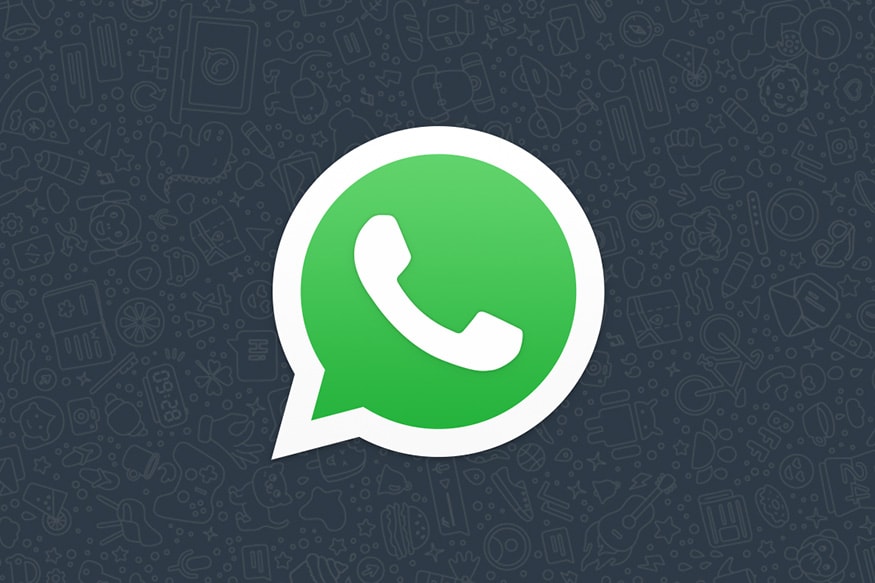WhatsApp
"Use desktop site in Smart phones to visit our blog in best manner"
WhatsApp or WhatsApp Messenger is a application which helps clients to share their text-messages, Media files, videos, documents, contacts, audios like this. WhatsApp is a american freeware application. Users can easily access these application from Playstore and Apple Store.  This application compatible with both Android and Mac. It is a cross-platform message and Voice overIP (VoIP) service which owned by Facebook. WhatsApp is not developed by Mark Zuckeberg. From this application an user can contact his friends or clients with Voice calls, Video calls and text-messeages. And also it allows do conference video calls. Android users can download this app from Playstore. Before using this WhatsApp we need to register our number with their server. This service requires standard contact number from a user to use this service. A user can only have one WhatsApp account for a number. In initial, this app is only compatible for phones only.
This application compatible with both Android and Mac. It is a cross-platform message and Voice overIP (VoIP) service which owned by Facebook. WhatsApp is not developed by Mark Zuckeberg. From this application an user can contact his friends or clients with Voice calls, Video calls and text-messeages. And also it allows do conference video calls. Android users can download this app from Playstore. Before using this WhatsApp we need to register our number with their server. This service requires standard contact number from a user to use this service. A user can only have one WhatsApp account for a number. In initial, this app is only compatible for phones only. After they introduces a web called "WhatsApp Web" from this we can connect our phone with the desktop web with unique QR Code. After that, they introduced a application for Desktop also. They give separate softwares for Windows and IOS. WhatsApp released a standalone business app which targeted small workers, that called WhatsApp Business, that allowed them to communicate with large business dealeres. The Client application was created by WhatsApp Inc. of Mountain View, California, which was acquired by Facebook Inc. . WhatsApp became the world's most popular messaging application by 2015 and has over more than 2 billion user all over the world by July 2020. It has become the primary communication messaging application in multiple countries.
After they introduces a web called "WhatsApp Web" from this we can connect our phone with the desktop web with unique QR Code. After that, they introduced a application for Desktop also. They give separate softwares for Windows and IOS. WhatsApp released a standalone business app which targeted small workers, that called WhatsApp Business, that allowed them to communicate with large business dealeres. The Client application was created by WhatsApp Inc. of Mountain View, California, which was acquired by Facebook Inc. . WhatsApp became the world's most popular messaging application by 2015 and has over more than 2 billion user all over the world by July 2020. It has become the primary communication messaging application in multiple countries.

WhatsApp
Author(s) Jon Koum, Brain Acton
Developers(s) WhatsApp Inc. (Facebook Inc.)
Initial Release January 2011, (11 Years ago)
iOS 2.20.80 July 23,2020
Android 2.20.195.17 July 28,2020
Written in Erlang
Operating Systems Android, iOS,KaiOS, Windows, Mac
Size 132.4 MB(iOS) and 28.92 MB (Android)
Website WhatsApp.com
History
WhatsApp was founded on 2009 by Brian Acton and Jon Koum who were the former employees of Yahoo!. They left the Yahoo at 2007 and took rest at South America. In South America, they applied jobs at Facebook but, they were rejected by them. 
In 2009, they recongnized that potential of apps in app industry. So, they both decided to create a messaging app which should "show statuses next to individual names of the people". They purchased iPhone and visited Koum's friend Alex Fishmen. They decided to develop an app in Mac. They met another Russian developer Igor Solomonnikov from "RentACode.com". Koum named that app as WhatsApp which sounds like "Whats Up".
In beginning the initial apps were get crashed. Koum decided to quit this intention. But every time, Brian didn't forget to encourage Kuam. So, they worked hard. They shared their happiness and sorrow together. In June 2009, Apple introduced the Push Notification service. So, John Kuam released the new version called WhatsApp 2.0. In this, everyone in the user's network would be notified, because of this the user's were increased very high. In another hand, Acton working on antoher startup idea. He gathered five former friends of Yahoo! and they invested $2.5 Lakh in Seed funding. In November, Acton officially joined in WhatsApp committee and became a Co-founder of WhatsApp. They launched this app in App Store. Later Koum recruited his friend in Los Angels, Chris Peiffer, to develop a Black Berry version. The Black Berry version arrived 2 months later.
They launched this app in App Store. Later Koum recruited his friend in Los Angels, Chris Peiffer, to develop a Black Berry version. The Black Berry version arrived 2 months later.
To cover most of the users they changed the free version to paid one to send documents, photes, videos etc. In 2011, WhatsApp is the top 20th apps in AppStore is US. By February 2013, WhatsApp crossed 200 million active users and 50 staff members in Sequoia Capital WhatsApp was valued at $1.5 Billion.
 On February 2014, Facebook Inc. owned WhatsApp Inc. for US$19 billion.The acquisition caused a considerable number of users to try and/or move to other message services. Telegram claimed that it acquired 8 million new users; and Line, 2 million.At a keynote presentation at the Mobile World Congress in Barcelona in February 2014, Facebook CEO Mark Zuckerberg said that Facebook's acquisition of WhatsApp was closely related to the Internet.org vision.In August 2014, WhatsApp was the most globally popular messaging app, with more than 600 million users. By early January 2015, WhatsApp had 700 million monthly users and over 30 billion messages every day. Forbes predicted years between 2012 and 2018, telecommunication would lose $380 billion, because of OTT servicings like WhatsApp. By 2016, WhatsApp crossed 1 Billion users in WhatsApp.
On February 2014, Facebook Inc. owned WhatsApp Inc. for US$19 billion.The acquisition caused a considerable number of users to try and/or move to other message services. Telegram claimed that it acquired 8 million new users; and Line, 2 million.At a keynote presentation at the Mobile World Congress in Barcelona in February 2014, Facebook CEO Mark Zuckerberg said that Facebook's acquisition of WhatsApp was closely related to the Internet.org vision.In August 2014, WhatsApp was the most globally popular messaging app, with more than 600 million users. By early January 2015, WhatsApp had 700 million monthly users and over 30 billion messages every day. Forbes predicted years between 2012 and 2018, telecommunication would lose $380 billion, because of OTT servicings like WhatsApp. By 2016, WhatsApp crossed 1 Billion users in WhatsApp.
Platform Support
2009 WhatsApp version 1.0
2010 Black Berry smartphones & Symbian OS & Android OS
2011 Nokia's Smartphone, Black Berry & Windows phone
2014 Android Update & Android Wear smartwatches, Windows and Linux OS
2015 Samsung's Tizen, WhatsApp Web
2016 KaiOS features
2019 WhatsApp officially launched a new fingerprint app-locking feature for Android users
End-to-end Encryption

On November 18, 2014, Open Whisper Systems announced a partnership with WhatsApp to provide end-to-end encryption by incorporating the encryption protocol used in Signal into each WhatsApp client platform. Open Whisper Systems said that they had already incorporated the protocol into the latest WhatsApp client for Android, and that support for other clients, group/media messages, and key verification would be coming soon after. WhatsApp confirmed the partnership to reporters, but there was no announcement or documentation about the encryption feature on the official website, and further requests for comment were declined. In April 2015, German magazine Heise Security used ARP spoofing to confirm that the protocol had been implemented for Android-to-Android messages, and that WhatsApp messages from or to iPhones running iOS were still not end-to-end encrypted. They expressed the concern that regular WhatsApp users still could not tell the difference between end-to-end encrypted messages and regular messages.

On April 5, 2016, WhatsApp and Open Whisper Systems announced that they had finished adding end-to-end encryption to "every form of communication" on WhatsApp, and that users could now verify each other's keys. Users were also given the option to enable a trust on first use mechanism in order to be notified if a correspondent's key changes.According to a white paper that was released along with the announcement, WhatsApp messages are encrypted with the Signal Protocol. WhatsApp calls are encrypted with SRTP, and all client-server communications are "layered within a separate encrypted channel". The Signal Protocol library used by WhatsApp is open-source and published under the GPLv3 license.
Privacy
WhatsApp was initially criticized for its lack of encryption, sending information as plaintext. Encryption was first added in May 2012. In 2016, WhatsApp was widely praised for the addition of end-to-end encryption and earned a 6 out of 7 points on the Electronic Frontier Foundation's "Secure Messaging Scorecard".  WhatsApp was criticized by security researchers and the Electronic Frontier Foundation for using backups that are not covered by end-to-end encryption and allow messages to be accessed by third-parties. In May 2019, a security vulnerability in WhatsApp was found and fixed that allowed a remote person to install spyware by making a call which did not need to be answered.
WhatsApp was criticized by security researchers and the Electronic Frontier Foundation for using backups that are not covered by end-to-end encryption and allow messages to be accessed by third-parties. In May 2019, a security vulnerability in WhatsApp was found and fixed that allowed a remote person to install spyware by making a call which did not need to be answered.
In September 2019, WhatsApp was criticized for its implementation of a 'delete for everyone' feature. iOS users can elect to save media to their camera roll automatically. When a user deletes media for everyone, WhatsApp does not delete images saved in the iOS camera roll and so those users are able to keep the images. WhatsApp released a statement saying that "the feature is working properly," and that images stored in the camera roll cannot be deleted due to Apple's security layers. In November 2019, WhatsApp released a new privacy feature that let users decide who adds them to the group. On December 17, 2019, WhatsApp fixed a security flaw that allowed cyber attackers to repeatedly crash the messaging application for all members of group chat, which could only be fixed by forcing the complete uninstall and reinstall of the app. The bug was discovered in August 2019 and reported to WhatsApp. It was fixed in version 2.19.246 onwards.

For security purposes, since February 1, 2020, WhatsApp has been made unavailable on smartphones using legacy operating systems like Android 2.3.7 or older and iPhone iOS 8 or older that are no longer updated by their providers. In April 2020, the NSO Group held its governmental clients accountable for the allegation of human rights abuses by WhatsApp. In its revelation via documents received from court, the group said that the mobile application periled to disregard its clients’ “national security and foreign policy concerns”. However, the company did not reveal names of the end users, which according to a research by Citizen Lab include, Saudi Arabia, Bahrain, Kazakhstan, Morocco, Mexico and the United Arab Emirates.

Comments
Post a Comment